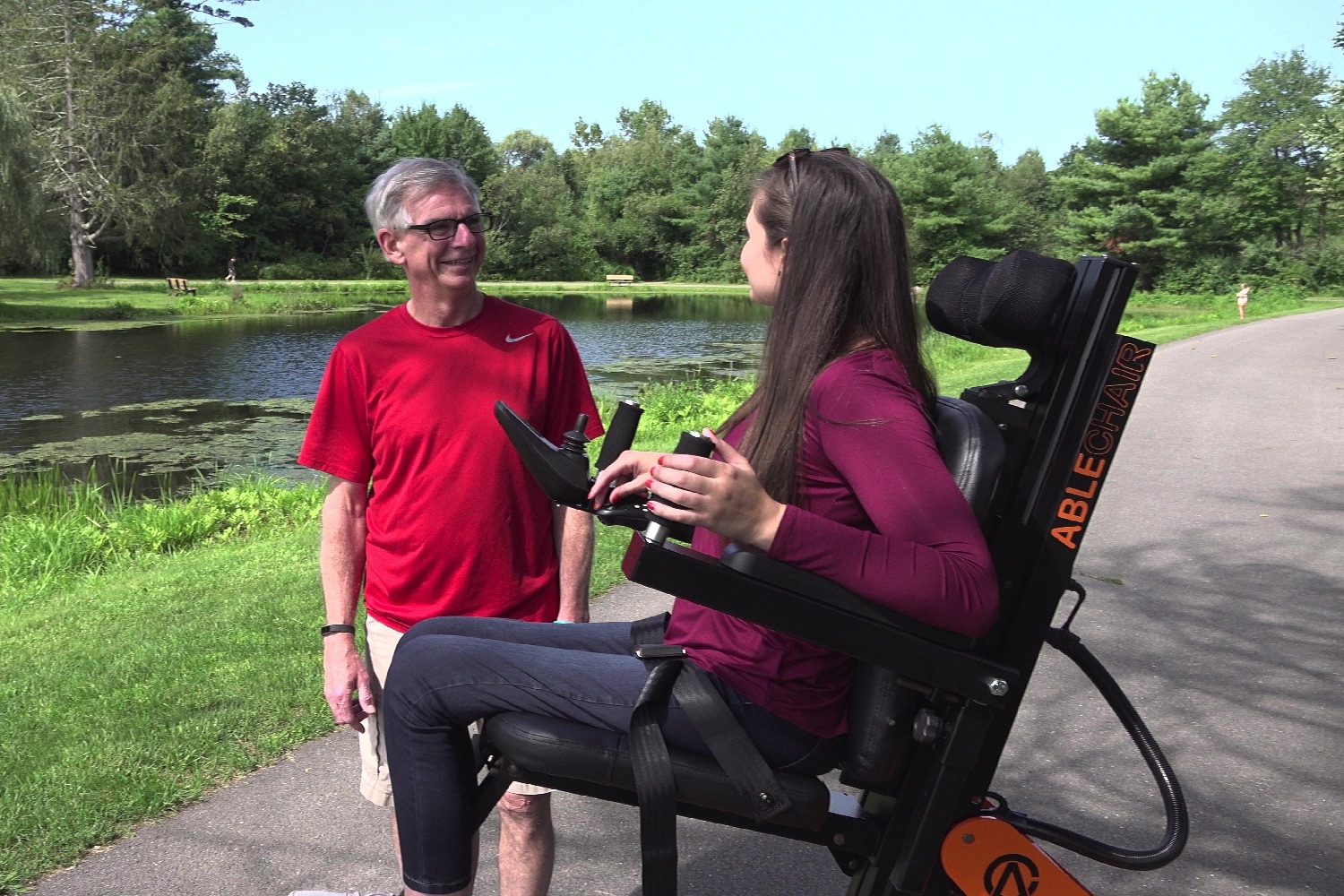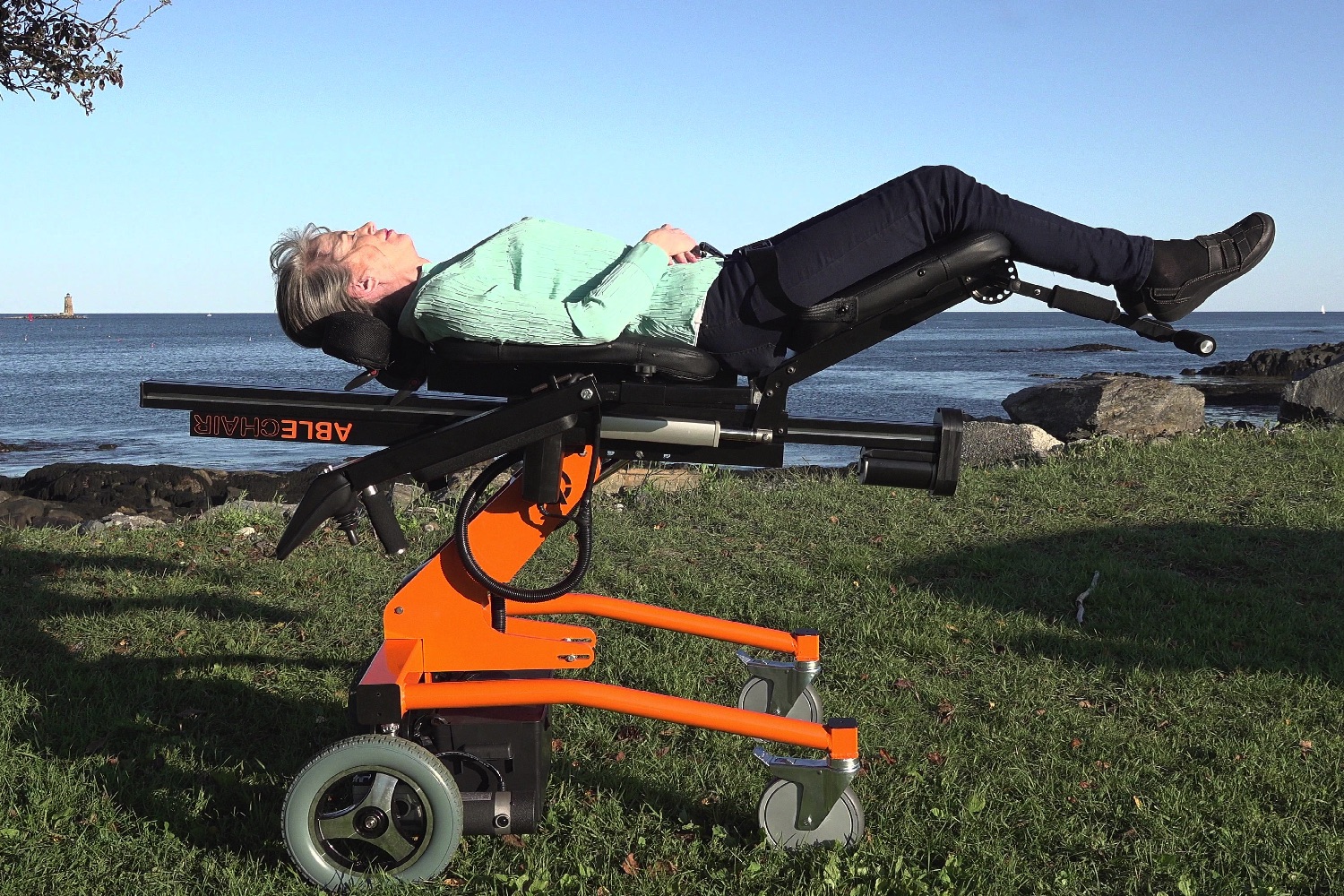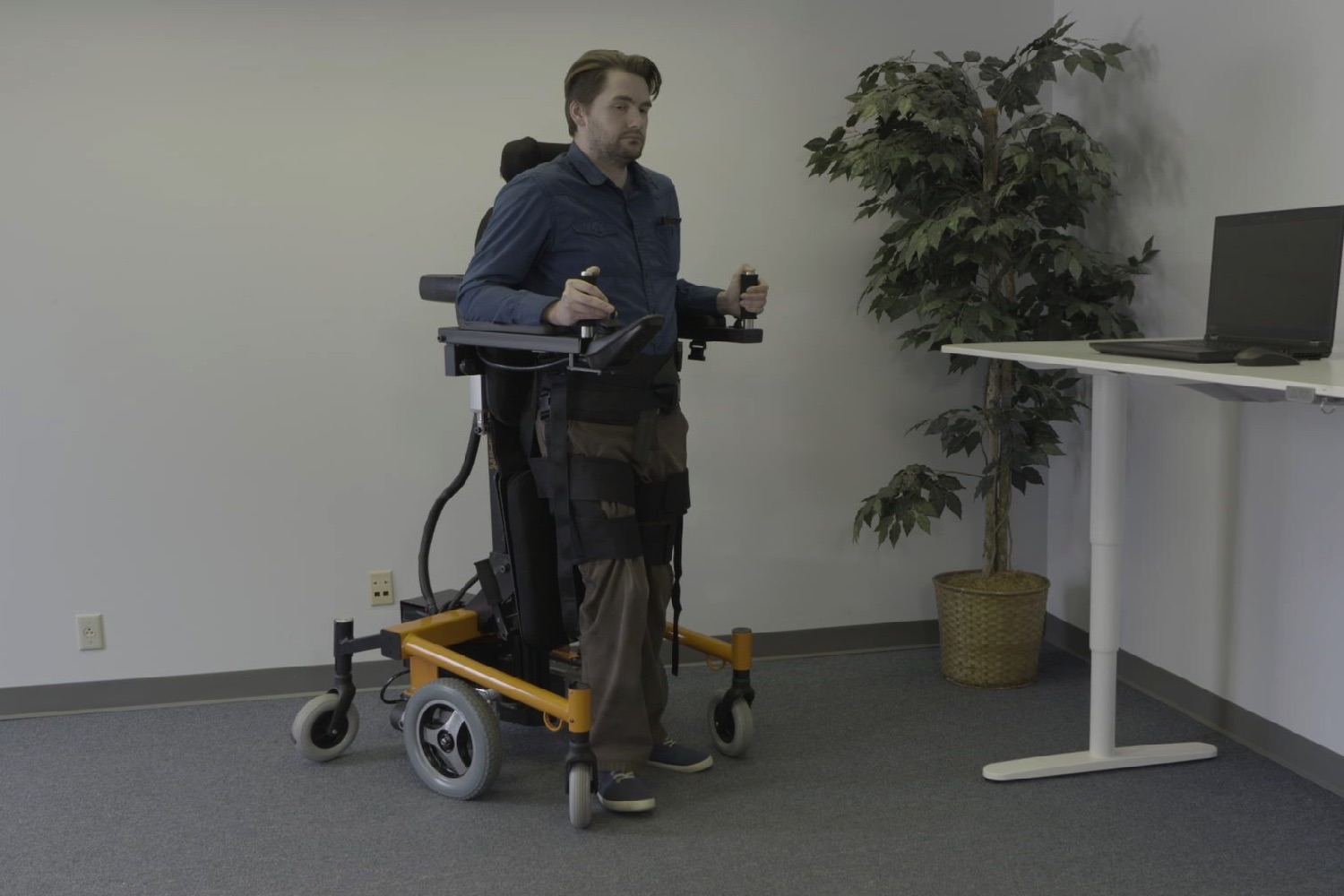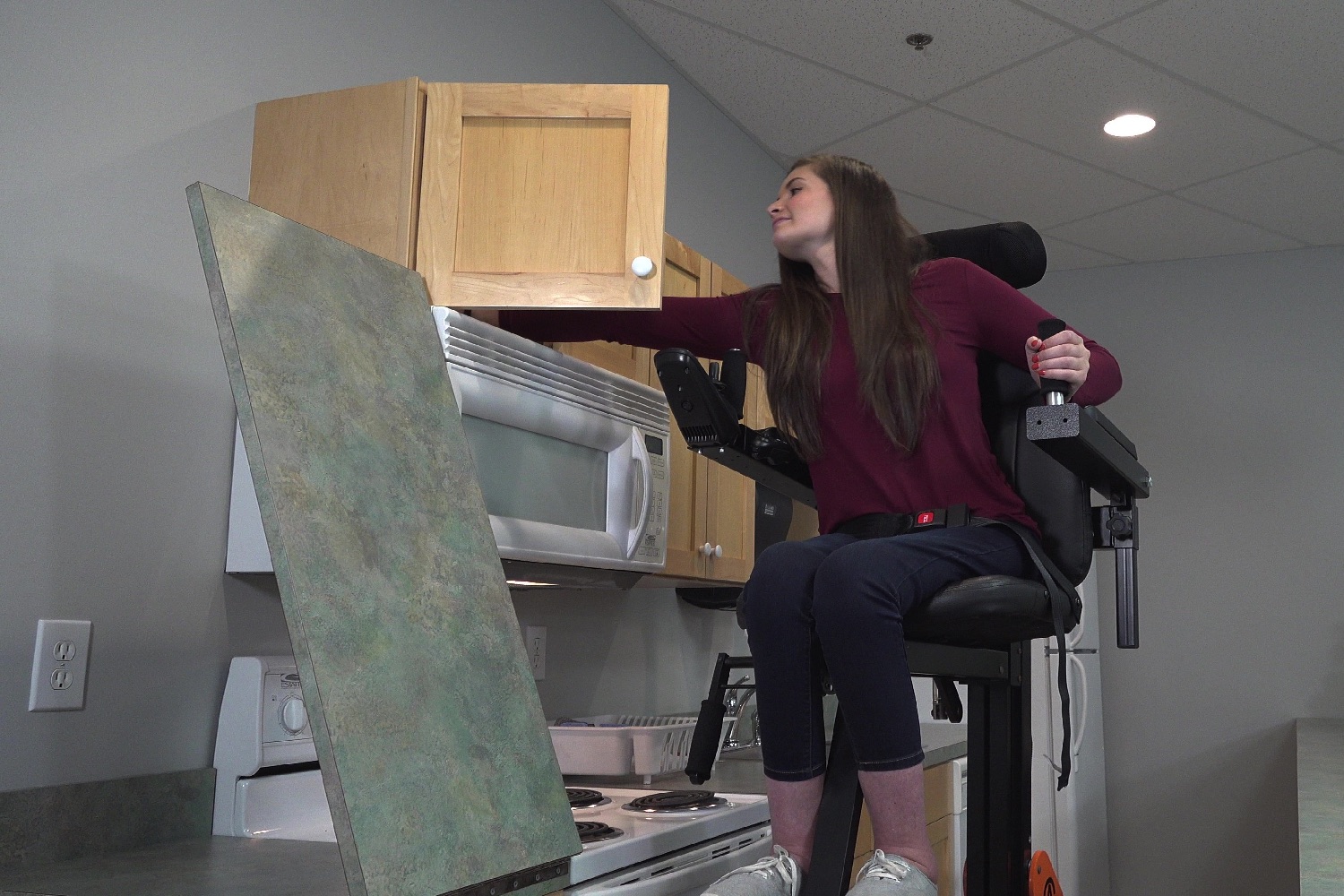Reinventing the wheelchair for the 21st century is something that many startups and researchers have attempted to do. The latest to take on this mobility challenge is the team behind AbleChair, a new smartphone-controlled wheelchair that’s able to transform into a range of different positions and configurations. This could mean a regular seated position, a more elevated position, a standing one, or even a fully horizontal one if you fancy taking a nap. It’s like the accessibility version of Optimus Prime.
Deepak Vatti, vice president of AbleChair product development, told Digital Trends that the goal of AbleChair is to help increase users’ independence by giving them the means of mechanically supporting their body no matter the scenario. If a regular wheelchair is akin to a set of crutches, he said, AbleChair is more like a bionic arm.
“With its unique floating-chair design, users get the most flexible positions, contributing to their productivity, health, and independence,” Vatti said. “Individuals who use power wheelchairs have specific needs including various positions for pressure relief and functional benefit. The user can have eye-level conversations while strolling down the street. They can reach things on a high shelf. They can even pick up a dropped cell phone.”
The AbleChair also boasts some neat features, like an in-built charging station for the aforementioned phones. Even with all of this functionality, however, it is still able to to fit in the same space as any other power wheelchair, and can even be made to fit inside a minivan for transportation. As Vatti told us, “We want this chair to be an extension of the user’s body.”
The AbleChair is the result of two years of intensive work, but it builds on close to two decades of experience by the team in adaptive gait-training technology. This has been used in hospitals, rehab centers, and homes.
“Our experience over the years, with people needing various adaptive aids, revealed a gap that has yet to be filled: A power wheelchair that can aid in improving the overall wellness of the individual,” Vatti said. “Being able to stand and even take a step or two can have a dramatic change in a person’s well-being. Being able to perform physical therapy at home is a very important concept to us.”
As ever, we offer our usual warnings about the risks inherent in crowdfunding campaigns. However, if you’re aware of these and still want to get involved, head over to the project’s Kickstarter page. Prices start at a relatively steep $7,995, although that’s not overly expensive considering the tech involved. Provided everything goes according to plan with fundraising and manufacturing, shipping should take place in October 2019.






